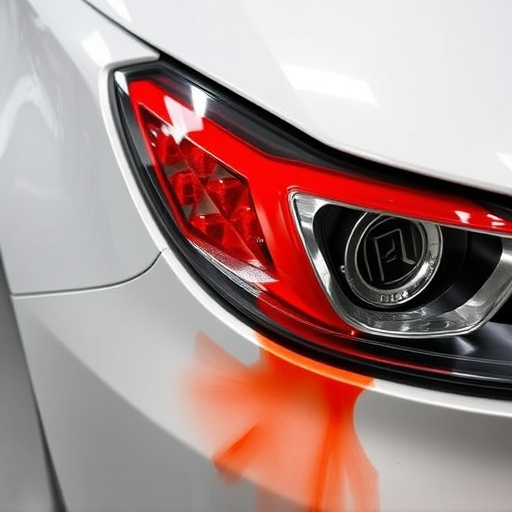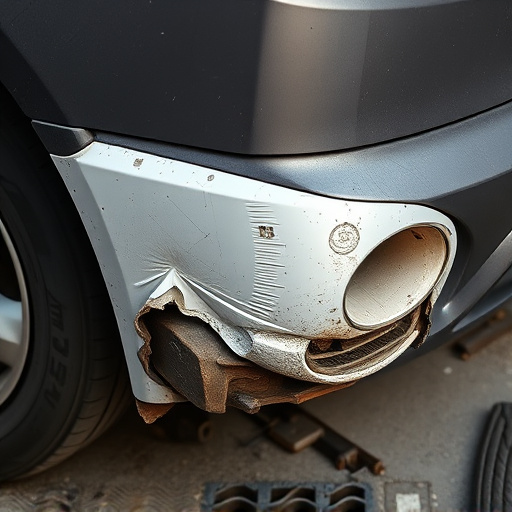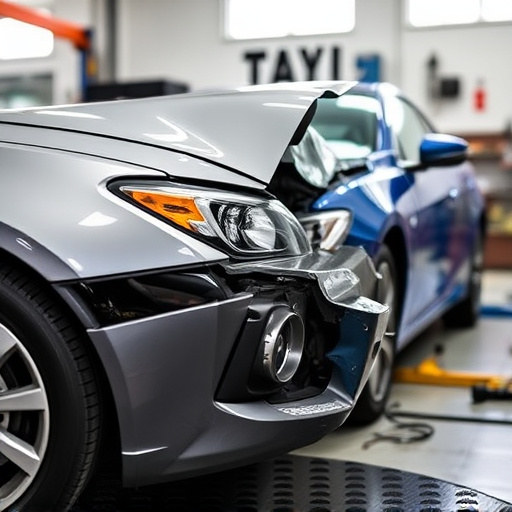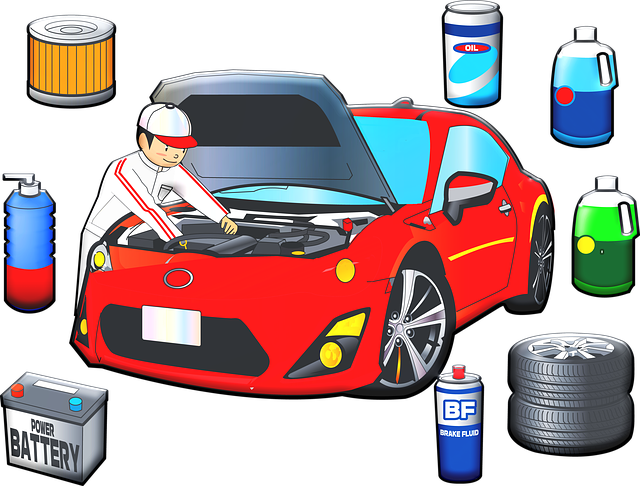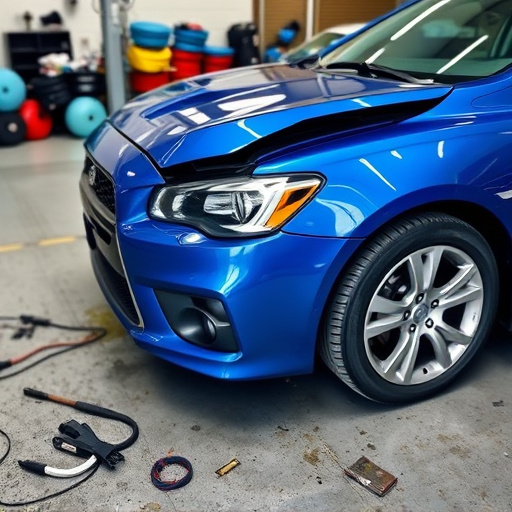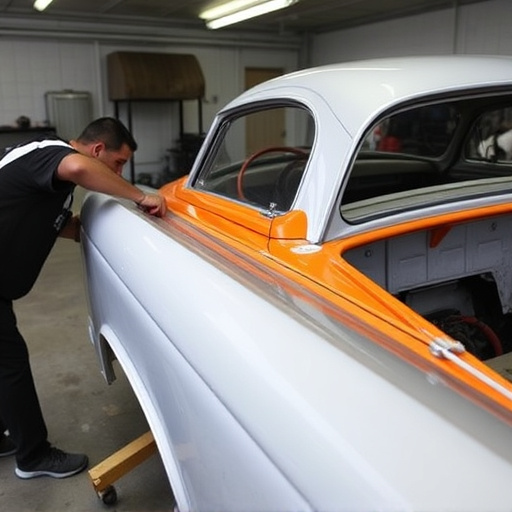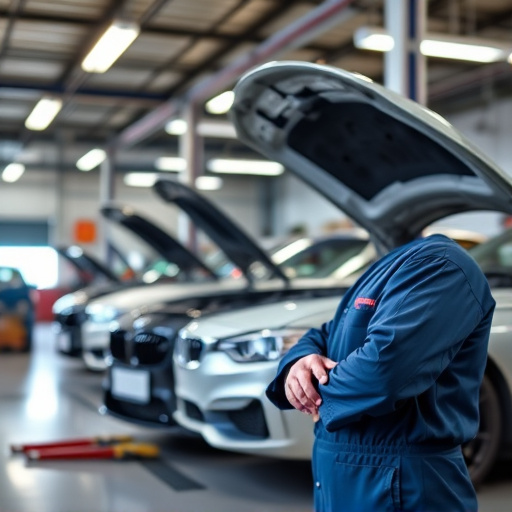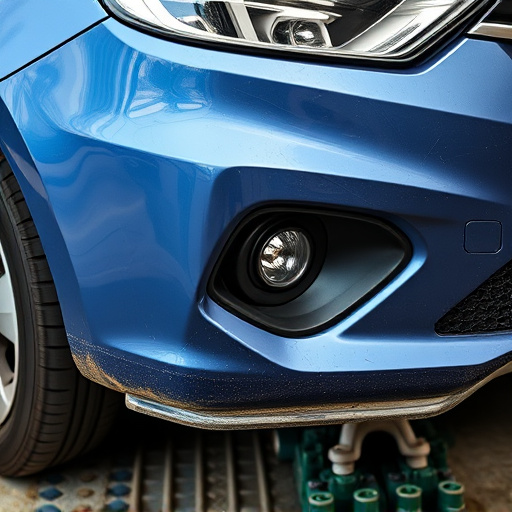Electric vehicles (EVs) pose challenges for pedestrian safety due to quiet operation and specialized design, requiring advanced repair techniques. Lack of audible warnings increases risk of collisions, underscoring need for enhanced pedestrian safety features tailored to EVs. EV battery packs and components necessitate careful repair methods to maintain structural integrity while preserving critical safety systems, such as exterior pedestrian protection mechanisms. Specialized knowledge is required for effective pedestrian safety features repair in EVs, ensuring reduced environmental impact and improved public safety.
Electric vehicles (EVs) are transforming our roads, but their unique challenges necessitate specialized pedestrian safety features. As EV adoption grows, navigating interactions between these silent powerhouses and pedestrians becomes paramount. Unlike internal combustion engines, EVs require distinct safety considerations due to their low-noise operation and rapid acceleration. This article explores why specialized pedestrian safety features repair is crucial for the harmonious integration of EVs into our communities, focusing on advanced technologies and tailored solutions.
- Unique Challenges of Electric Vehicles for Pedestrians
- Advanced Safety Features: A New Standard for EVs
- Specialized Repairs: Ensuring Safe Interactions Between EV and Pedestrians
Unique Challenges of Electric Vehicles for Pedestrians
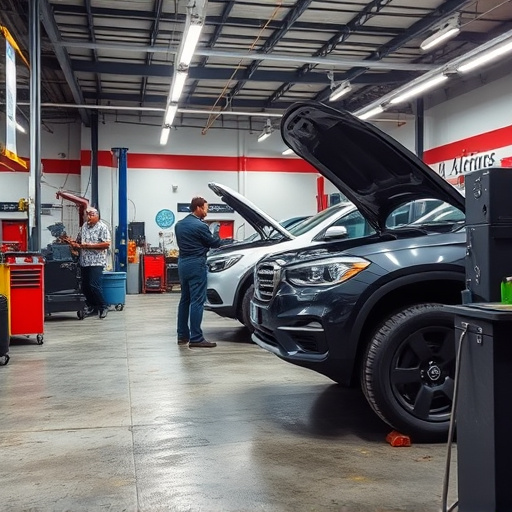
Electric vehicles (EVs) present unique challenges for pedestrian safety compared to their internal combustion engine counterparts. One key difference lies in the sound and visibility aspects. EVs, due to their quiet operation, can sneak up on pedestrians, especially in urban areas where noise pollution is already high. This lack of audible warning can lead to unexpected collisions, highlighting the need for enhanced pedestrian safety features designed specifically for these vehicles.
Moreover, the design and layout of EV battery packs and other components can affect the vehicle’s overall shape and profile. In a fender bender or minor collision, traditional auto body repair techniques may not adequately address the structural integrity of EVs. Vehicle body shops specializing in EV repairs need to be equipped with advanced tools and knowledge to ensure proper restoration without compromising safety features, such as pedestrian protection systems designed into the vehicle’s exterior.
Advanced Safety Features: A New Standard for EVs
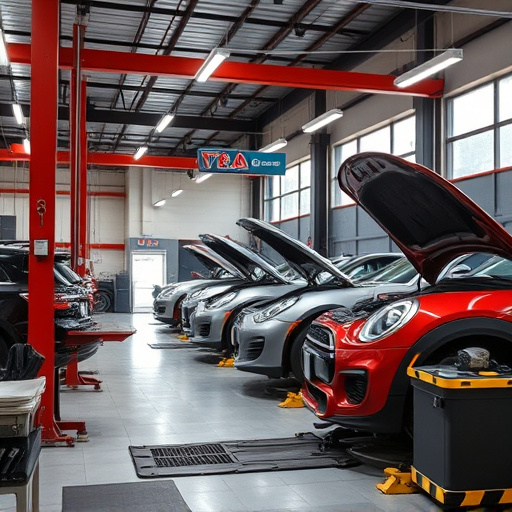
Electric vehicles (EVs) are transforming our transportation landscape, offering a cleaner and more sustainable future. However, this shift brings new challenges, particularly when it comes to pedestrian safety. As EVs become more prevalent on our roads, traditional vehicle collision repair practices need to evolve to incorporate specialized pedestrian safety features. These advanced safety measures are no longer optional but essential to mitigate risks associated with the unique design and power characteristics of electric cars.
Pedestrians often have a lower profile and may be less visible to EV drivers due to the quiet operation and different sensor capabilities compared to conventional vehicles. To address this, EV manufacturers are incorporating cutting-edge technologies like advanced driver-assistance systems (ADAS), enhanced sensors, and improved emergency braking mechanisms. These features not only help prevent accidents but also provide better protection for pedestrians in case of a collision, ensuring a safer shared environment for everyone on the road.
Specialized Repairs: Ensuring Safe Interactions Between EV and Pedestrians
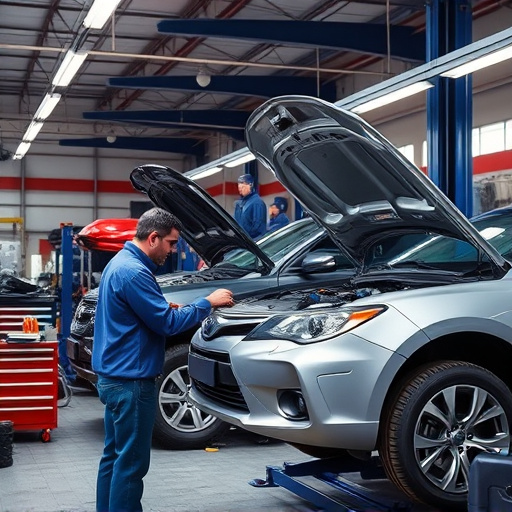
Electric Vehicles (EVs) are transforming the automotive landscape, offering numerous benefits such as reduced emissions and improved efficiency. However, their unique design and operation necessitate specialized attention when it comes to pedestrian safety features repair. Unlike conventional vehicles, EVs often have different collision dynamics due to their electric motors and battery packs, which can affect the severity of impacts and the pattern of damage. This requires auto collision centers and fleet repair services to be equipped with the knowledge and tools to handle specific EV repairs, including vehicle dent repair for any resulting cosmetic damage.
Pedestrians interacting with EVs present unique challenges. For instance, the low noise levels of these vehicles can make them harder to hear, increasing the risk during low-speed maneuvers or when backing up. Specialized pedestrian safety features repair involves integrating advanced sensors and warning systems into EVs to alert pedestrians of their presence. Additionally, modifying exterior design elements to enhance visibility and adding specialized repairs for any subsequent damage ensures safer interactions between EV owners and pedestrians in shared spaces.
Electric vehicles (EVs) are transforming our transportation landscape, but their unique characteristics present new challenges for pedestrian safety. As we navigate this evolving world, it’s clear that specialized repairs and advanced safety features are essential to ensure safe interactions between EVs and pedestrians. By adopting innovative solutions, the automotive industry can create a harmonious and secure future for both EV owners and foot travelers alike, addressing the critical need for robust pedestrian safety features repair.
